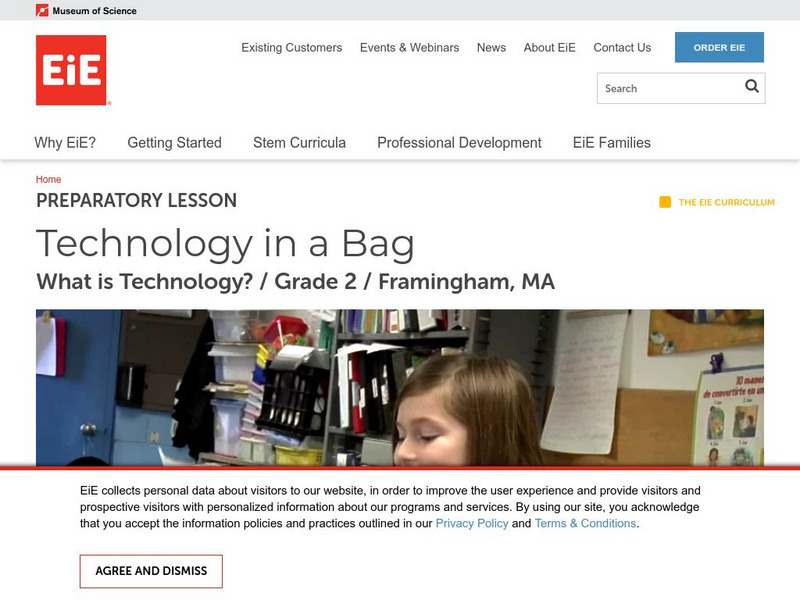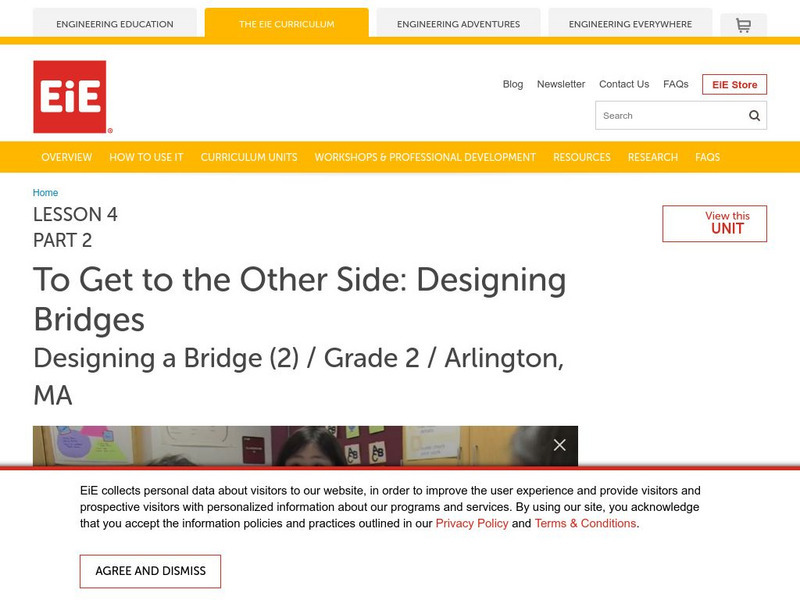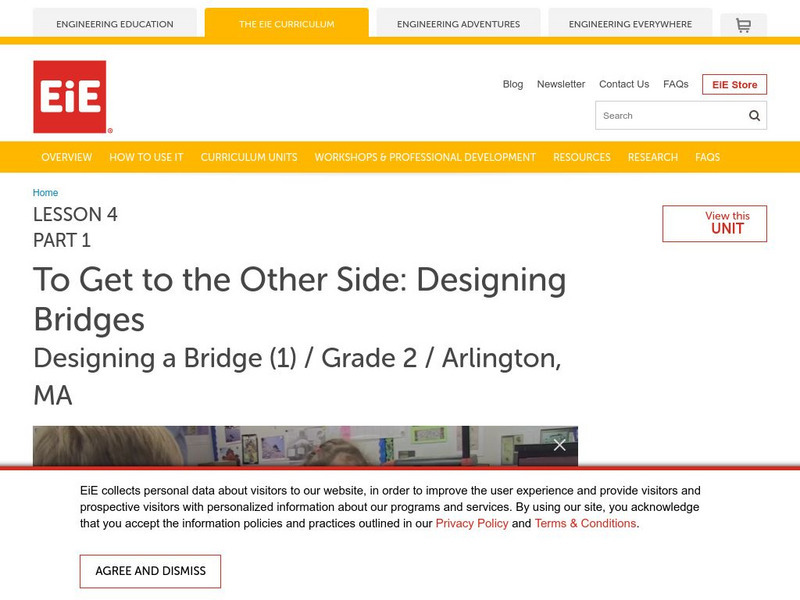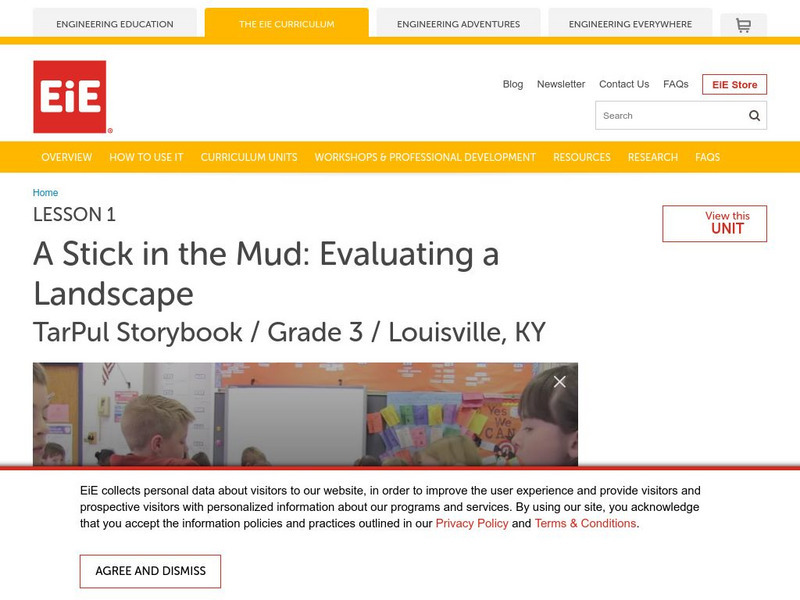Hi, what do you want to do?
Museum of Science
Ei E: The Best of Bugs: Designing Hand Pollinators Lesson 3 Part 2
Students perform controlled experiments to identify effective materials and methods for picking up and dropping off pollen. [10:41]
Museum of Science
Ei E: The Best of Bugs: Designing Hand Pollinators Lesson 3 Part 1
Students perform controlled experiments to identify effective materials and methods for picking up and dropping off pollen. [12:49]
Museum of Science
Ei E: Designing a Hand Pollinator
Students apply their knowledge of materials, the pollination system, and agricultural engineering as they imagine, plan, create, test, and improve their own hand pollinators.
Museum of Science
Ei E: The Best of Bugs: Designing Hand Pollinators Lesson 3
Students perform controlled experiments to identify effective materials and methods for picking up and dropping off pollen. [9:12]
Museum of Science
Ei E: The Best of Bugs: Designing Hand Pollinators Lesson 1
A storybook introduces the engineering challenge and context. In this story, Mariana, a girl from the Dominican Republic, learns about agricultural engineering as she designs a hand pollinator to use in her garden. [7:49]
Museum of Science
Ei E: What Is Technology?
Students think about what technology is and are introduced to the idea that engineers design technologies. [13:21]
Museum of Science
Ei E: What Is Technology?
Students think about what technology is and are introduced to the idea that engineers design technologies. [14:35]
Museum of Science
Ei E: Designing a Bridge (2)
Students apply their knowledge of balance, forces, and civil engineering as they imagine, plan, create, test, and improve their own bridges.
Museum of Science
Ei E: Designing a Bridge (1)
Students apply their knowledge of balance, forces, and civil engineering as they imagine, plan, create, test, and improve their own bridges.
Museum of Science
Ei E: Bridging Understanding (2)
Students perform a controlled test of three types of bridges to see how much weight the bridges can support.
Museum of Science
Ei E: Bridging Understanding (1)
Students perform a controlled test of three types of bridges to see how much weight the bridges can support.
Museum of Science
Ei E: A Stick in the Mud: Evaluating a Landscape Lesson 4 Part 1
Students use maps to study the erosion along a riverbank over time and conduct controlled experiments to determine how soil compaction around a foundation affects the foundation's strength. [13:19]
Museum of Science
Ei E: Tar Pul Storybook
A storybook introduces the engineering challenge and context. In this story, Suman, a boy from Nepal, learns about geotechnical engineering as he helps evaluate a site for a TarPul. [13:57]
Museum of Science
Ei E: Catching the Wind: Designing Windmills Lesson 3 Part 2
Students predict, test, observe, and describe how sails made of different materials and shapes catch the wind. [15:00]
Museum of Science
Ei E: A Work in Process: Improving a Play Dough Process Lesson 1
A storybook introduces the engineering challenge and context. In this story, Michelle, a girl from Canada, learns about chemical engineering as she attempts to design a play dough making process to share with her hockey teammates. [7:02]
Museum of Science
Ei E: The Attraction Is Obvious: Designing Maglev Systems Lesson 2
Students think like transportation engineers as they improve the safety and efficiency of a model intersection. [10:01]
Museum of Science
Ei E: Lighten Up: Designing Lighting Systems Lesson 3 Part 2
Students experiment with reflecting light using mirrors and learn about light intensity. [10:28]
Museum of Science
Ei E: Evaluating a Landscape (2)
Students focus on the geotechnical engineering problem of evaluating a landscape as they imagine, plan, create, test, and improve a site for a wire cable bridge called a TarPul. [15:26]
Museum of Science
Ei E: A Stick in the Mud: Evaluating a Landscape Lesson 3 Part 1
Students use maps to study the erosion along a riverbank over time and conduct controlled experiments to determine how soil compaction around a foundation affects the foundation's strength. [8:35]
Museum of Science
Ei E: Spotlight Videos
These six Spotlight Videos from Engineering is Elementary demonstrate to teachers effective classroom practices and strategies for introducing engineering concepts to students.
Museum of Science
Ei E: Water, Water Everywhere: Designing Water Filters Lesson 4
Students focus on the environmental engineering problem of providing clean water as they imagine, plan, create, test, and improve their own water filters. [11:30]
Museum of Science
Ei E: To Get to the Other Side: Designing Bridges Lesson 1
This teacher introduces an engineering challenge with a story. The main character, Javier, a boy from Texas, learns about civil engineering as he designs his own bridge. [8:57]
Museum of Science
Eie: To Get to the Other Side: Designing Bridges Lesson 3
Watch footage of lesson where students perform a controlled test of three types of bridges to see how much weight the bridges can support. [13:07]
Museum of Science
Ei E: To Get to the Other Side: Designing Bridges Lesson 4
This model lesson shows students applying their knowledge of balance, forces, and civil engineering as they imagine, plan, create, test, and improve their own bridges. [14:07]














